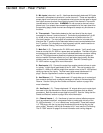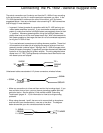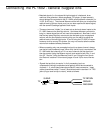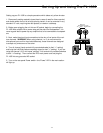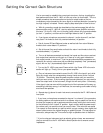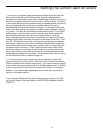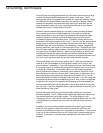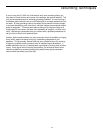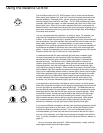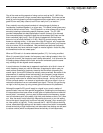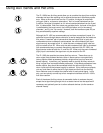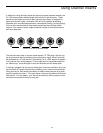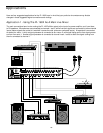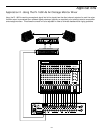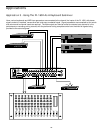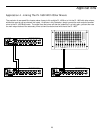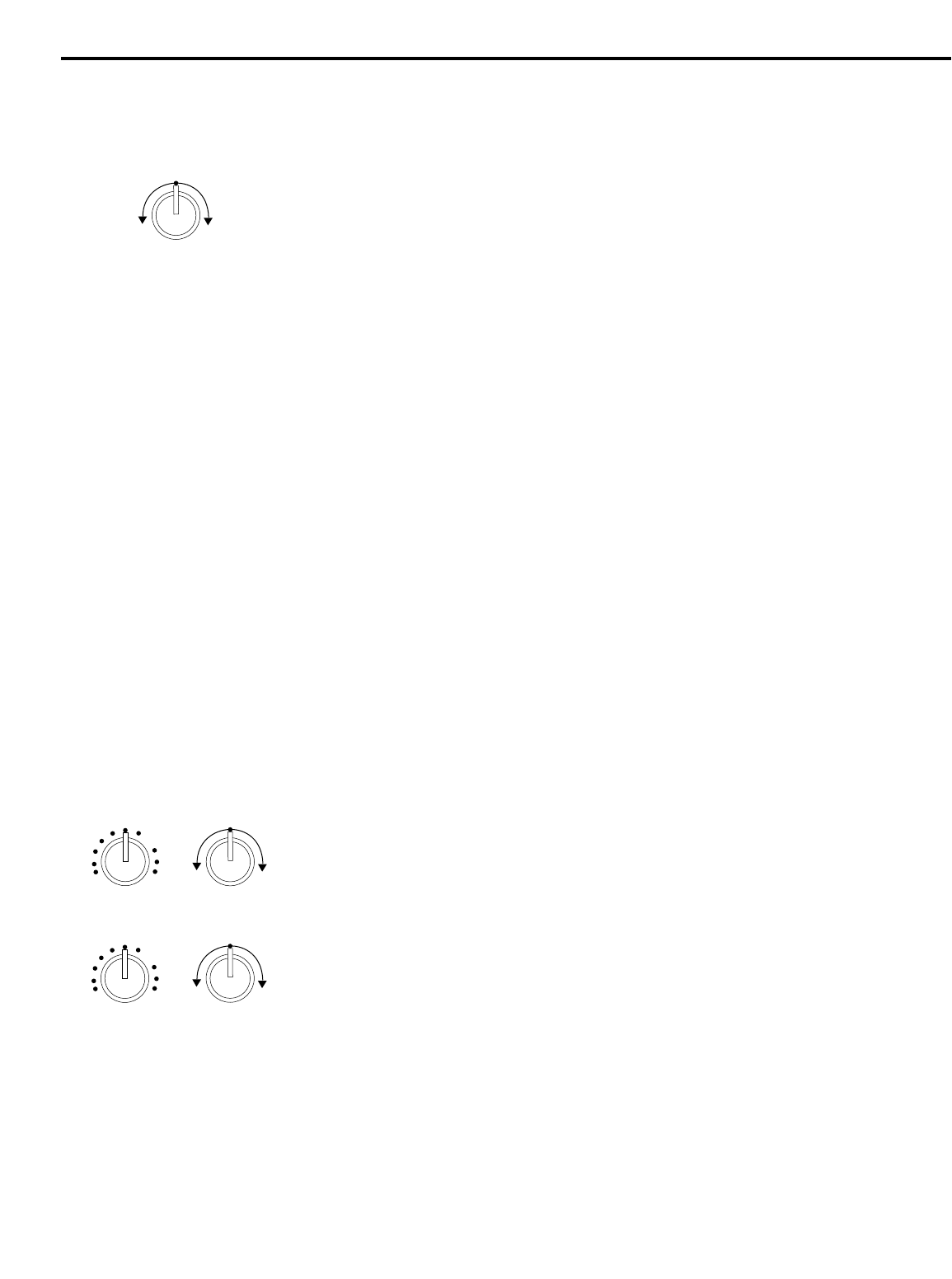
16
Using the Balance Control
The final Main output of the PL 1602 is stereo—that is, there are two discrete
Main output jacks, labeled “left” and “right,” which will normally be routed to two
discrete speakers.* Because of this, you will usually be working with a stereo
field that ranges from hard left to hard right. The PL 1602 provides eight stereo
channels, each with two inputs—an odd-numbered (left) input and an even-num-
bered (right) input. When only the odd-numbered (left) input is connected, the
Balance control in that stereo channel acts like a panning control, allowing you to
place each individual sound at any point within this left-right field, while keeping
the overall level constant.
You can use stereo panning creatively in a variety of ways: For example, you
might want to have guitars coming from one speaker and keyboards from
another, or you might use panning to “spread” the signal from a piano miked with
two microphones—one over the bass notes (panned left) and the other over the
treble notes (panned right). In live performance, you may want to resist the
temptation to pan anything completely hard left or right, since some members of
the audience not seated in the center of the venue may miss some signal alto-
gether. In these circumstances, you’re best to use modest panning, with signals
routed no further than the 9 o’clock and 3 o’clock positions.
In channels where both the odd-numbered (left) and even-numbered (right)
inputs are connected, the odd-numbered (left) input signal is automatically
panned hard left and the even-numbered (right) input signal is automatically
panned hard right. The Balance knob in these channels then controls the
relative levels of the two input signals. When the knob is placed at its center
(detented) position, both the odd-numbered (left) and even-numbered (right)
input signals are at equal strength. When moved left of center, the signal of the
odd-numbered (left) input remains the same but the signal of the even-numbered
(right) input is attenuated; when the knob is moved right of center, the the signal
of the even-numbered (right) input remains the same but the signal of the odd-
numbered (left) input is attenuated. When placed fully counterclockwise, only
the odd-numbered (left) input is heard (panned hard left); when placed fully
clockwise, only the even-numbered (right) input is heard (panned hard right).
In the stereo Aux return section, the Balance control works in a similar fashion.
When both inputs are connected, the left signal is automatically panned hard left
and the right signal is automatically panned hard right. The Balance knob con-
trols the relative levels of the two signals. When the knob is placed at its center
(detented) position, both the left and right signals are at equal strength. When
moved left of center, the left input signal remains the same but the right input
signal is attenuated; when the knob is moved right of center, the right input
signal remains the same but the left input signal is attenuated. When placed
fully counterclockwise, only the left input is heard (panned hard left); when
placed fully clockwise, only the right input is heard (panned hard right).
If you connect different monophonic devices (such as effects processors) to both
the left and right inputs of an Aux return, you can use the Aux Balance control
to blend the relative contribution of each. If you turn the Balance knob fully
counterclockwise, you’ll hear only the device connected to the left Aux input; if
you turn it fully clockwise, you’ll hear only the device connected to the right Aux
input. For more information, see the “Using Aux Sends and Returns” section on
page 18.
* You can, of course, also use the PL 1602 monophonically—simply route the
same signal to both the left and right outputs.
R
BALANCE
L
∞
AUX 1/2 RETURN
+10
0
∞
AUX 3/4 RETURN
+10
0
R
L
R
L
BALANCE
BALANCE



